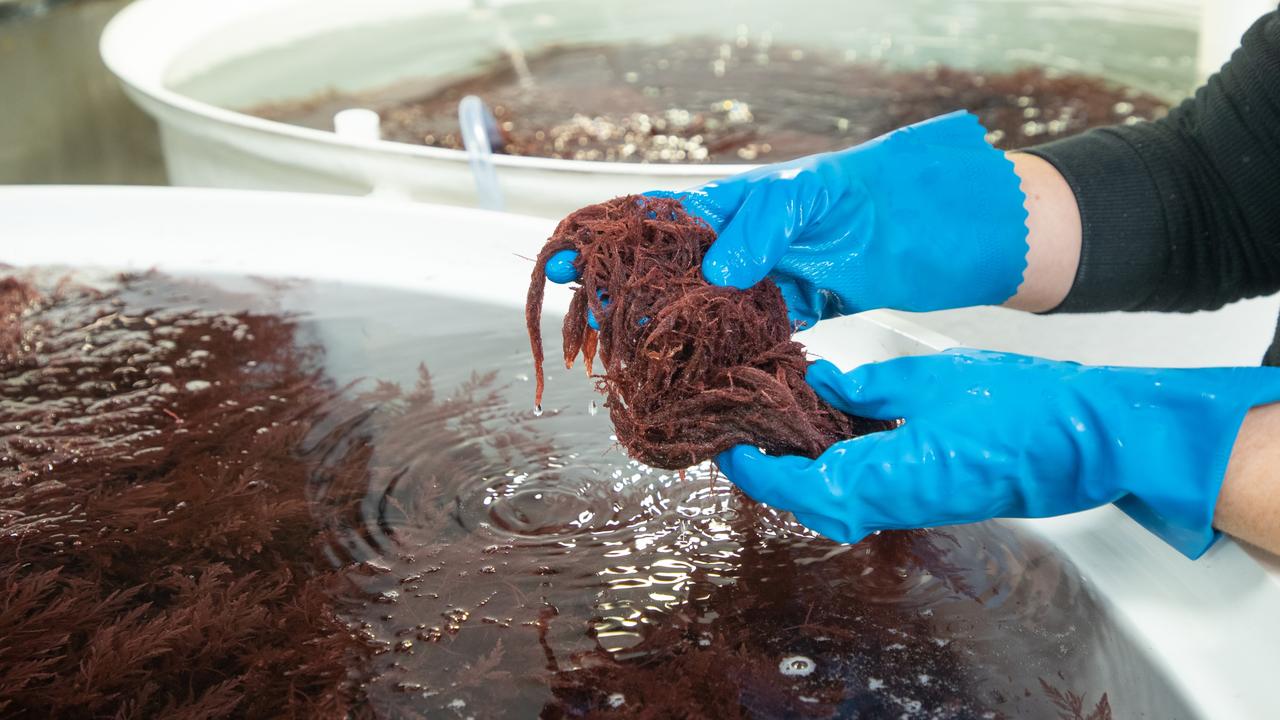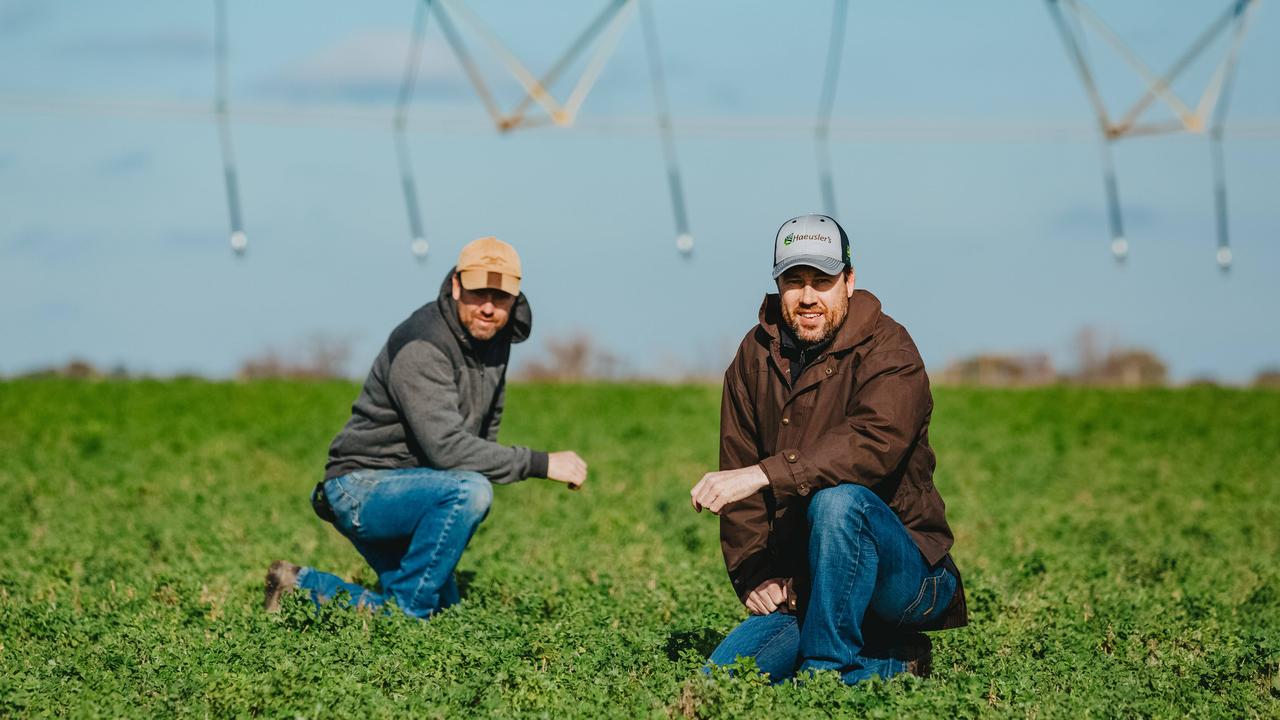Kingfisher Citrus: Farmers’ markets the saving grace
WHEN profits plunge and water dries up, the Fishers turn to the one constant in agriculture – family support.
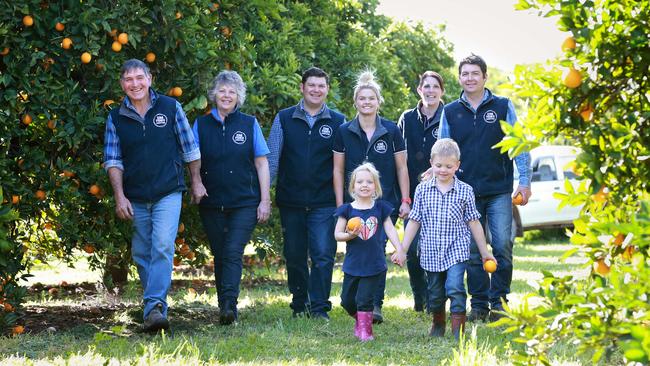
HOW do you turn an orange farm that’s in the red to black?
Go green, and then head to a farmers’ market.
That’s what the Fisher family of Narrung, near Swan Hill, did with their 113-hectare citrus farm when faced with a drought, a volatile Australian dollar and when family health forced them to farm differently.
“Farmers’ markets have been the saving grace of the property,” Ronan Fisher says. “Customers like to know we’re as sustainable as possible so we do as much as we can organically.”
The fourth-generation citrus farm was first started by Angus and Alexander Fisher in 1938. In 1962 Alexander’s son, Lex, took over and still works with his wife Glenda, and sons Ronan, 40 and Lynton, 37 and their families.
Lex says throughout the family’s history, the citrus farm was always large-scale commercial and export, at its peak harvesting about 1000 tonnes of fruit per year.
“Back when I started we had two oranges – navels and valencias – and imperial mandarins and everything went through the wholesale markets,” Lex says. “We’d pick it, put it on a semi and send it to the packing sheds. We raised several families on this farm by doing that.”
But the 71-year-old says when the millennial drought hit, about 2004, their irrigation water allocation plummeted to 39 per cent.
Ronan, who returned to work on the farm in 2000 after studying electrical engineering, explains this was a turning point for the farm.
“That was like giving you a 500ml bottle of water and telling you to walk into the desert and survive on that, when what you really needed was more than two litres,” he says.
Then the Australian dollar hit record highs of about US$1.10 and their export markets in the US and South East Asia crumbled.
“We got to a position where we either went broke if we stayed doing what we were doing, or we changed what we were doing, or we sold out,” Lex says. “So we sat down with the family, about 12 years ago, and made a business plan to stay in the business but change what we were doing.”
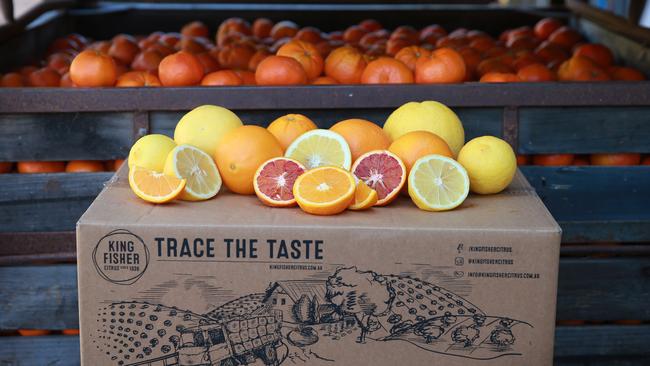
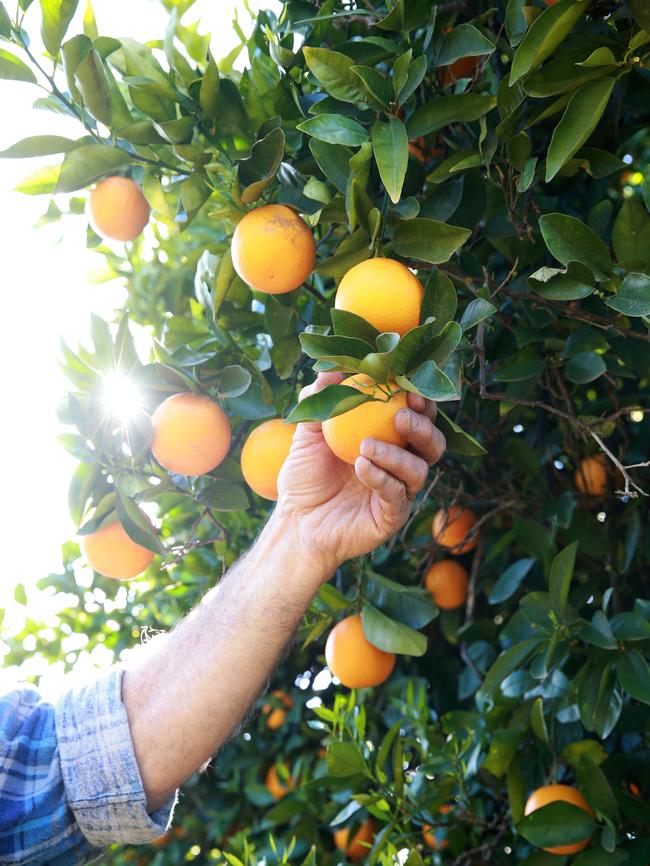

As devastating as it was, their first task was to pull out a third of the crop, focusing purely on trees and varieties that were profitable. Many of the trees that remained were pruned hard, which reduced their water use and ensured they survived.
Production dropped to 200 tonnes of fruit annually and the Fishers started selling their fruit at local community markets.
It was around the same time that Glenda became involved with the local drought assistance recovery program, becoming good friends with the co-ordinator, who put them in touch with the Victorian Farmers’ Market Association.
In 2007 they attended their first farmers’ market in Collingwood and now sell at 22 each month – from Swan Hill to Bairnsdale and Clunes – under the Kingfisher Citrus brand.
Lynton, who commutes between his home in Nambrok in Gippsland to the family farm, is responsible for marketing and in August began selling online through Farmhouse Direct, which they hope will be a growing side of the business.
Ronan says selling at farmers’ markets was initially a culture shock.
“For farmers used to just packing it off on a truck, we had to find out what customers wanted,” he says.

Since starting to sell at markets, the Fishers have changed their farm management. To cater for the varying tastes of customers, they have expanded their varieties and now farm year-round.
Their most popular fruit continues to be navels, farmed on a 10-hectare section of the farm, followed by valencias on 5.5 hectares, with citrus generally yielding about 20 tonnes per hectare. They farm two other orange varieties: blood and seville.
There are four mandarin varieties covering four hectares – imperial (the most popular at two hectares), afourer, daisy and ellendale. They produce three lime varieties – Tahitian, finger and kaffir, and three lemon varieties – eureka, meyer and lemonade.
In addition there are grapefruit, pomelo, tangelos and seven varieties of avocados, on 1.5 hectares, and this will increase to two hectares within the year.
Onions, nine varieties of pumpkins and garlic finish off the Fishers’ impressive horticultural repertoire. “Oh, and we have mulberries for jams,” Ronan adds.
Because such a large swathe of the citrus trees were cut down a decade ago, many of these trees have been replaced in recent years and are not yet at full production, with plantings still continuing. So while they produce about 200 tonnes a year, this will grow considerably over the next few years.
When asked how many more trees they intend to plant, Lex responds: “How long is a piece of string?”
“We’ve got room, with our business vision, to go into ground that has not been planted with citrus before,” he says. “This year we have 250 avocado trees going into ground and next year we’ll have another half hectare.”
Ronan adds: “It’s all about evening out the cash flow over 12 months.”
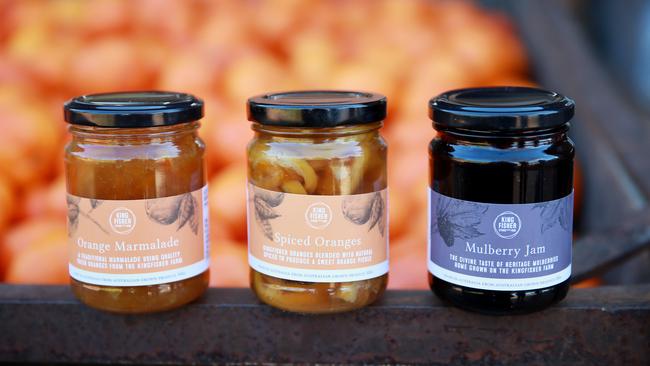
Lynton also has a 30-hectare farm at Nambrok, near Sale in Gippsland, on which he has planted 50 citrus trees – limes, mandarins, blood oranges and navels – as a test patch, hoping that in the next five to 10 years the trees will be able to supplement the family farm’s supply.
“We are not after volume,” Lynton says, “but to capitalise on a window of opportunity when supply in Narrung drops off.”
Harvest in Narrung begins with navels, which run from May to November, while valencias are picked from November to May, with some fruit kept on the tree as long as possible to increase sweetness.
Mandarins are harvested from the start of June with daisy, through to October, finishing with afourer. Lemons and limes are year-round, while avocados start in August and run through to Christmas, when pumpkin harvest begins, followed by onions in January.
As successful as the farm has become, the Fishers’ story does not end there.
About the same time as the drought a decade ago, Glenda became seriously ill. Among the issues she faced was chronic fatigue syndrome.
“For two and a half years I was very sick,” says Glenda, who moved to the farm in 1970 after growing up on a sheep and wheat property nearby in Manangatang.
“It was partly the stress at the time,” she says, “but also it was chemically related.”
It was then the family decided to go green, limiting their use of synthetic inputs as much as possible.
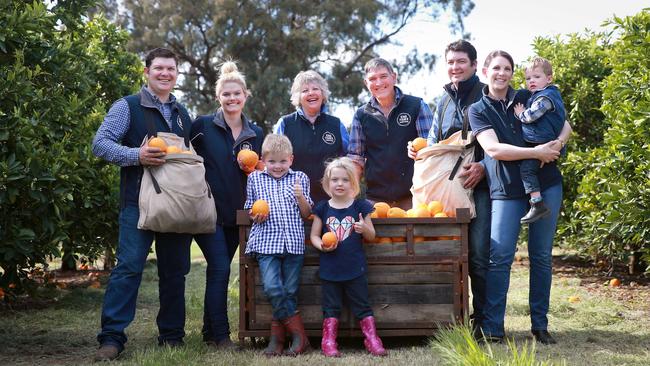
While still in transition, they estimate they have cut back chemical use by as much as half and are aiming to be certified organic in the future. They say their focus is now on healthy soil – which is something consumers at farmers’ markets ask about – and has involved a make-over of farm management.
Firstly, Ronan says, they have changed their 70km irrigation system from spray to drip.
“Because the sprays were 30cm high under the trees it meant we couldn’t slash the grass and weeds so we’d use herbicide,” he says.
This year they have installed an automated drip system, which saves on water and herbicides.
The herbicide they do use has an added organic base of molasses and fulvic acid, which breaks the weedicide down quickly and feeds the soil.
The farm has a twice-yearly application of fertiliser of trace elements such as zinc and magnesium, as well as lime and gypsum – all based on soil testing and leaf analysis. In addition, they use compost and sprays of liquid seaweed and fish emulsion and recently have used worm castings on the trees.
Because Narrung has a Mediterranean climate – with an average rainfall of 300mm – they have low disease and pest problems.
To keep black spot at bay they use an organic copper spray.
“If the fruit we sell at farmers’ markets has an insect blemish then the customer accepts that,” Ronan says. “They would rather we do as much as we can organically.”
Lex says becoming more sustainable and turning to farmers’ markets has increased the family’s workload. “We work all week to pick and pack and then spend our weekends at farmers’ markets,” Lex says. Despite this, the family has adjusted to the new roles.
“Before I was like most farmers, happier on a tractor or with a welder in the workshop, but we enjoy farmers’ markets now because the customers appreciate the quality of fruit. We don’t have to sell it. They come to us.”
FARM FACTS - Kingfisher Citrus
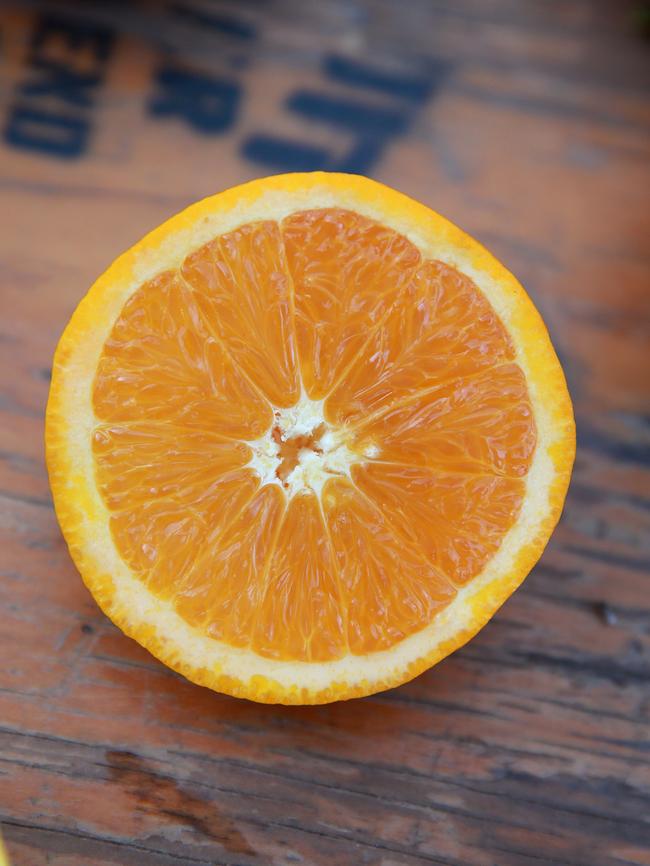
Lex and Glenda Fisher, their two sons, Ronan and Lynton, and their families, run Kingfisher Citrus on 113 hectares at Narrung, near Swan Hill.
Lynton also runs a 30-hectare farm at Nambrok, Gippsland, on which he has planted 50 citrus trees as a test patch, hoping that in the next five to 10 years the trees will produce fruit to offset the family farm’s supply.
The family produces oranges, mandarins, lemons, limes, grapefruit, pomelo, tangelo, avocados, pumpkins and garlic.
The produce is sold at 22 farmers’ markets and online through Farmhouse Direct.
They farm as organically as possible and hope to be certified in coming years.
The Fisher family is in the running to be The Weekly Times Coles 2016 Farmer of the Year. Visit theweeklytimes.com.au


